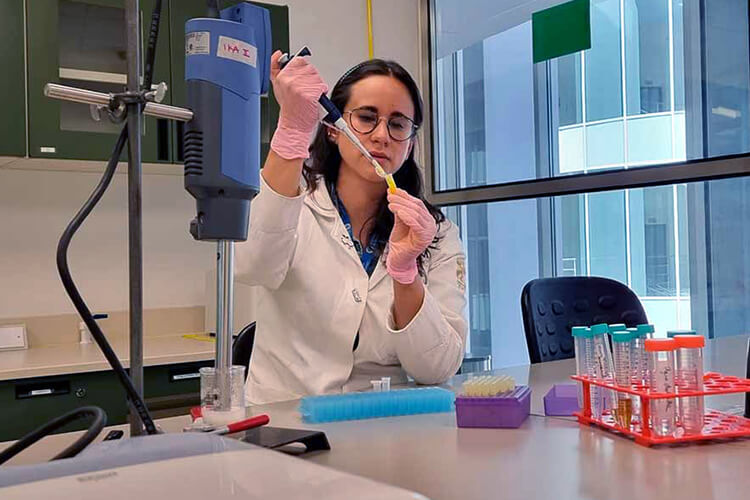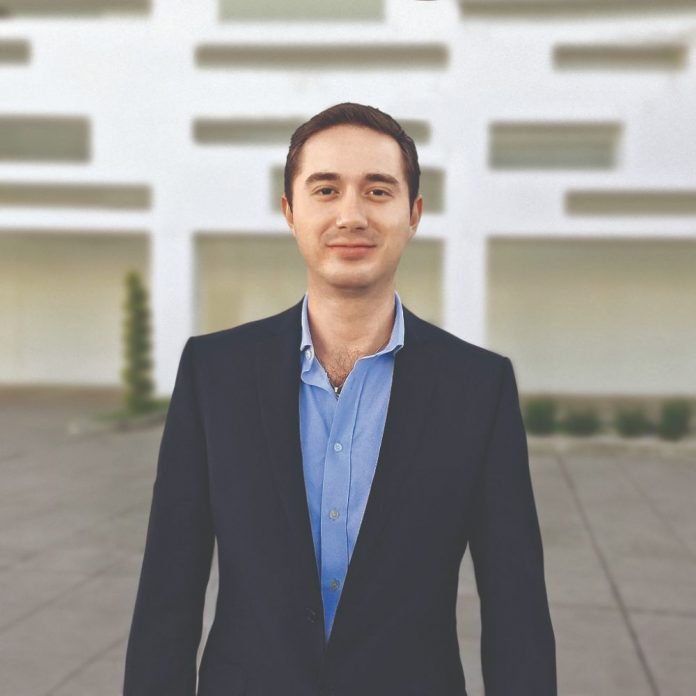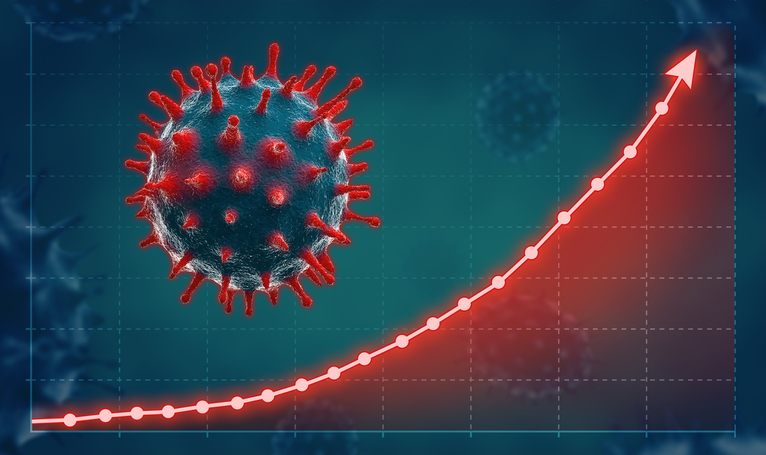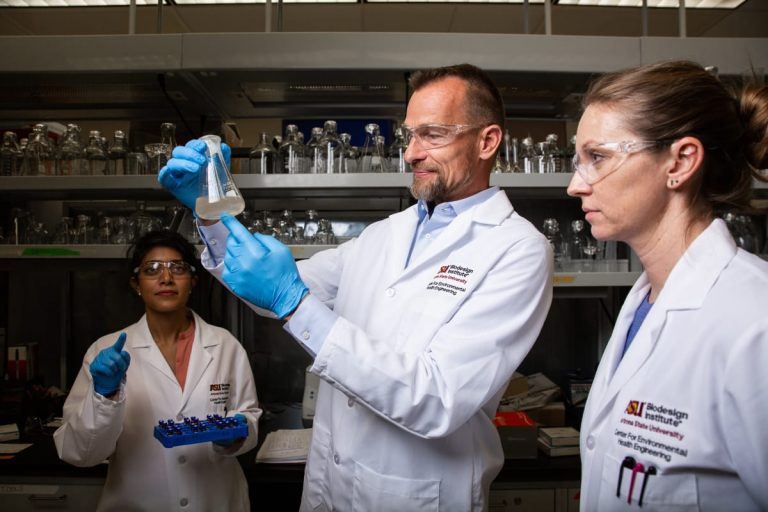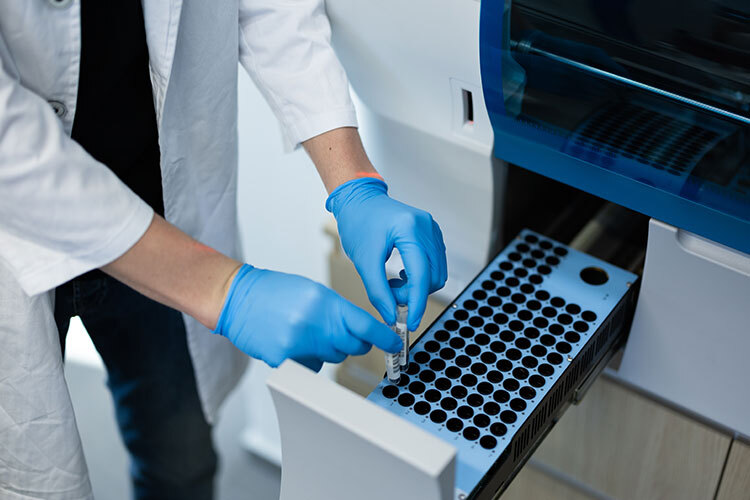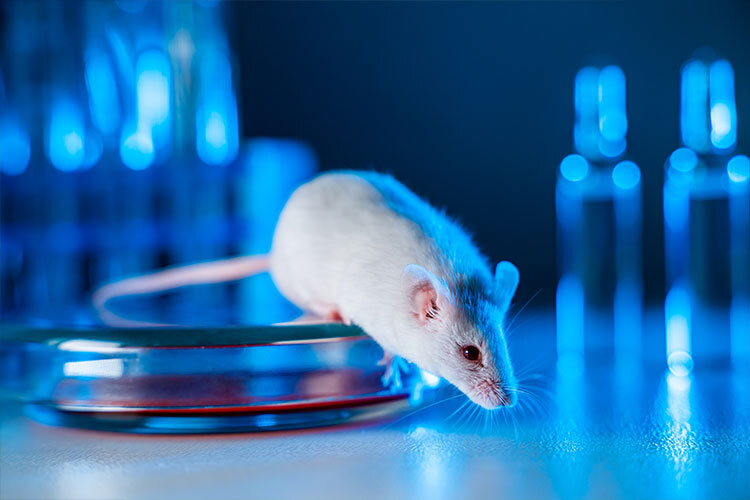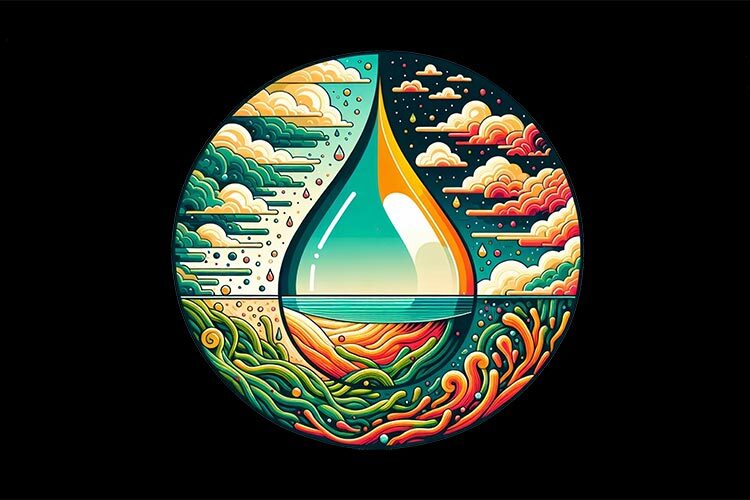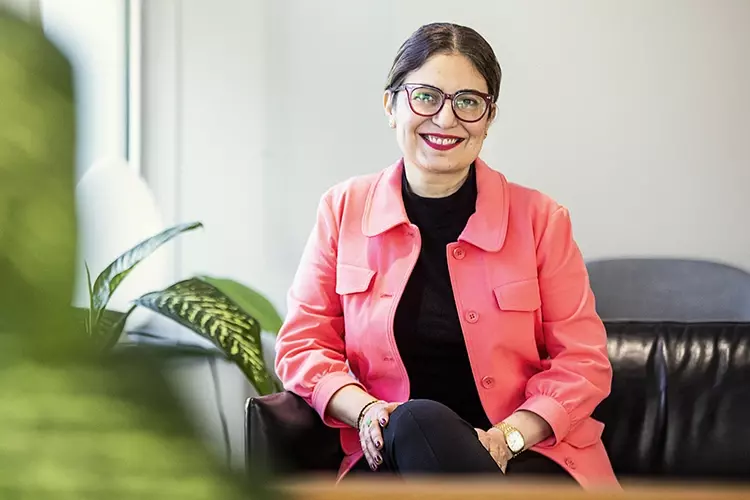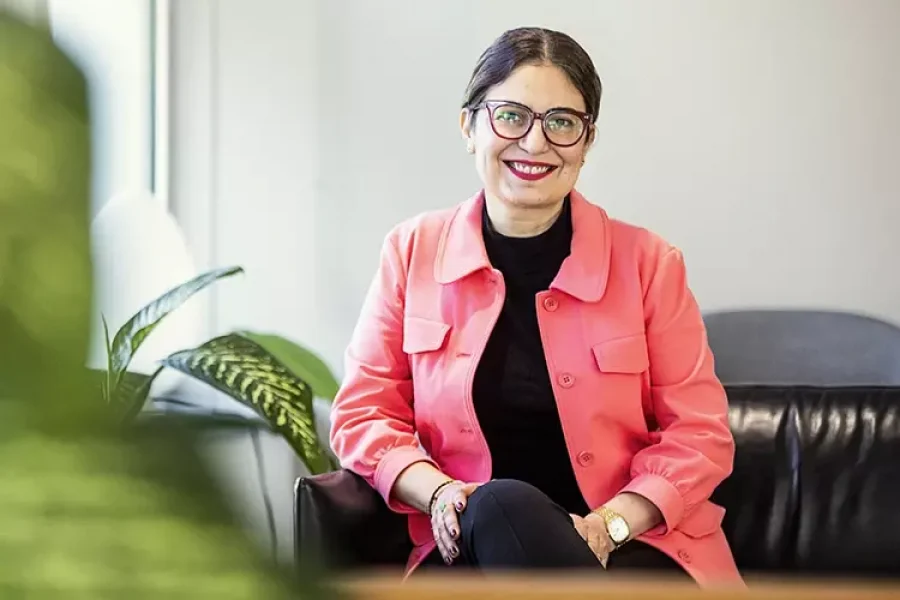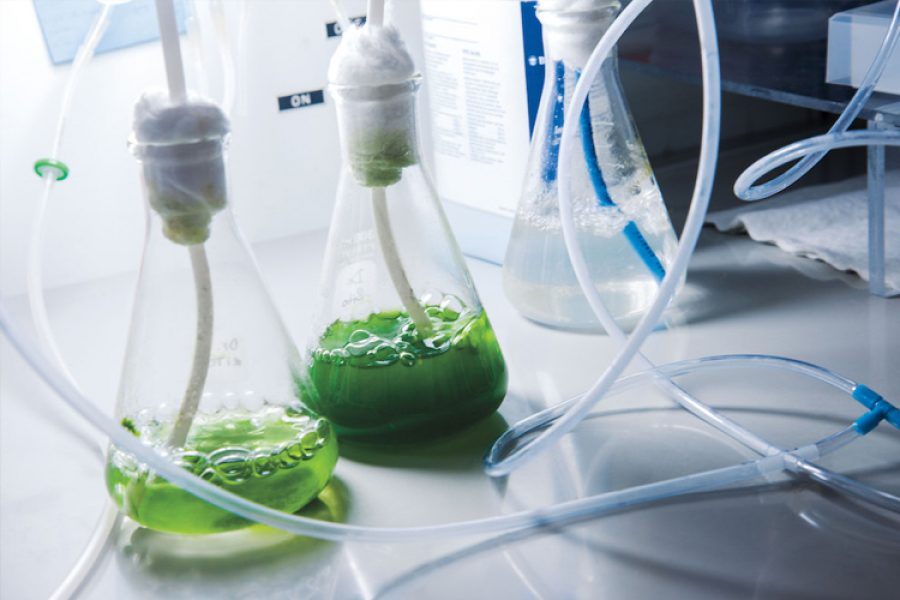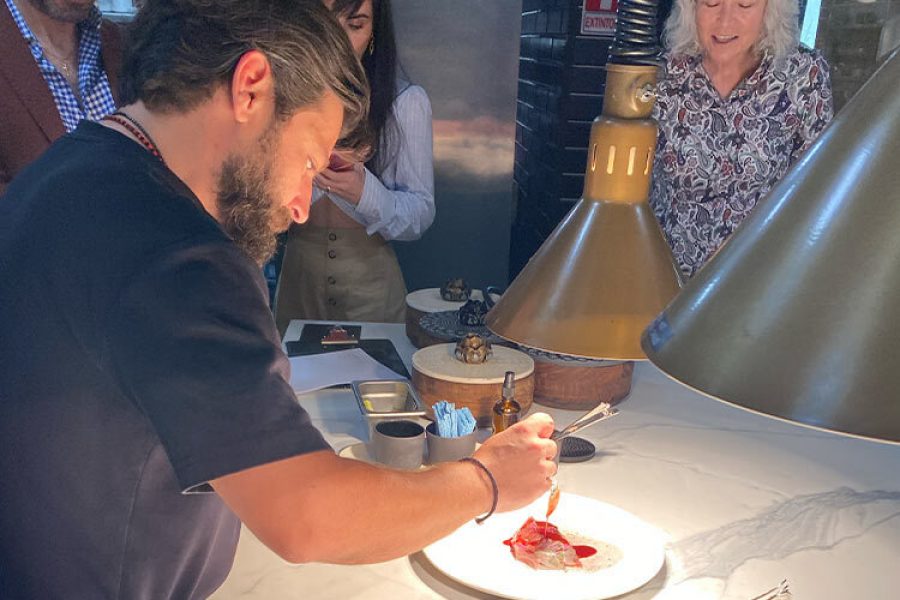Before deciding on a career, María Luisa del Prado Audelo considered two options that seemed far apart: cosmetology and chemical engineering. Although a fan of the popular science TV show “Beakman’s World,” she could also see herself working for a lifestyle magazine like the one in the movie “The Devil Wears Prada.”
“I started to look into how to do research in cosmetology. I found Dr. María Cristina Piña Barba, who was working on skin proteins. I started to focus on burns, and that’s where my path in biomaterials began,” recalls this Tec de Monterrey researcher and professor in an interview with TecScience.
Del Prado Audelo also participates in the Tec’s SOI-STEM program, an initiative that aims to empower women in higher education in the areas of science, technology, engineering, and mathematics (STEM).
“There still aren’t enough women in science. We represent about 30% of the world’s researchers,” explains Del Prado Audelo, who in 2023 was included in 3M’s third annual “25 Women in Science” award.
Nanotechnology in the 3M award
In 2023, nine Mexican women received awards from multinational manufacturing company 3M, including two professors from Tec de Monterrey: María Luisa del Prado Audelo and Mirna Alejandra González.
This award is given to women who stood out for their scientific merits and who have contributed to encouraging new generations of women to study science.
The award seeks to reduce the gender gap by paving the way for girls and young women to take up STEM disciplines. That’s why, since its first year, the 3M award has published a digital book that can be downloaded for free which includes the story of the researchers selected for the award.
“Earth seen from afar looks like a miniature. That image, taken from a video or perhaps from a magazine, was etched into María Luisa’s retina when she was a girl. At that time, she dreamed of being an astronaut because she was moved by the enormity of space and the way it showed how small everything on the human scale is. As time went by, something ironic happened: that little girl who was fascinated by the enormity of space ended up specializing in the world of nanotechnology,” reads 3M’s digital book about Del Prado Audelo.
The researcher has scientific reasoning in her blood from her mother, who studied pure chemistry. The 3M book points out that it was other women who helped guide young Maria Luisa’s scientific career, from her high school chemistry teacher to her tutor in her master’s and doctoral studies.
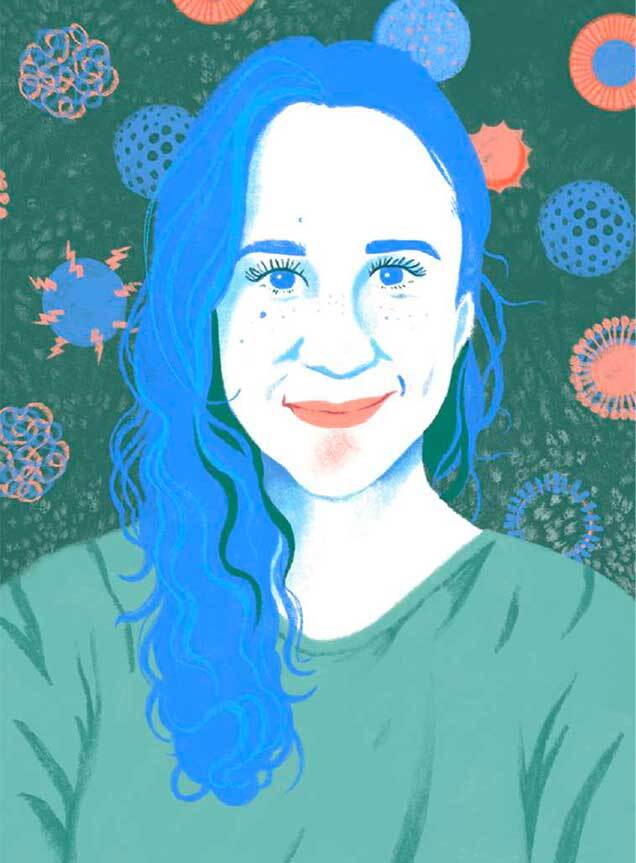
Nanoscopic scale
Del Prado Audelo is currently a professor in materials science and engineering. She is passionate about biopolymeric materials and specializes in tissue regeneration engineering.
“During my post-doctoral studies, I started formulating nanosystems for controlled release of biomolecules to use them as unconventional treatments for pathological sciences,” she explains in the ebook, which tells her story in a way that is accessible for young girls and teens.
The 3M publication states that her current work consists of projects to encapsulate drugs in nanocarriers and create nano, micro, and macro platforms for sustained release of nanoparticles.
In her interview with TecScience, the researcher explains the scientific development that earned her the recognition of her peers, especially with regard to the development of NanoSkin skin regeneration.
“We put nanoparticles on a huge, enriched Band-Aid (a kind of strip formed by a biomaetrial that is placed on a wound to protect it). I work with nanoparticles for different things, but I also work with macro platforms for release,” she says, referring to these strips of biomaterials that release molecules with beneficial properties.
The challenge of obtaining these particles is not only in their extraction but also in the way they are delivered to the body. This is what is known as a “release platform,” which can be made from natural or synthetic biopolymers.
“What nanotechnology does is encapsulate these molecules in a spherical shape. Because it’s a sphere, there’s a lot of surface area, and it can be modified so that it gets to the place you want it to go, such as the liver or other places,” she says.
“Curcumin, for example, has so many properties that it can be applied to other places. So, we add those nanoparticles to a macro platform to make skin coatings,” the professor adds.
Tec research to combat hospital-acquired diseases
The project Del Prado Audelo is currently involved in attempts to encapsulate the nanoparticles present in essential oils to attack microorganisms that are not killed by traditional pharmaceuticals.
These are microorganisms that have developed a defense mechanism which coats them with a kind of gelatin composed of proteins, lipids, and DNA to protect them. This biofilm prevents the dispersal of any type of molecule.
“The compounds we’re working with in the lab have anti-biofilm properties,” says the researcher.
She explains that these types of microorganisms cause the most common hospital-acquired infections and are a “major health problem” that was heightened by the Covid-19 pandemic.
“There were people who didn’t die from SARS-CoV2 per se but because of an infection they acquired while intubated, and those infections can be very difficult to eradicate,” she says.
The Tec team involved in this project proposes a non-traditional treatment with nanoparticles obtained from cinnamon and rosemary essential oils to combat antibiotic-resistant microorganisms.
“Those microorganisms don’t respond to conventional treatment but can be affected by certain oils. However, these oils are volatile and very irritating, so they can’t be used directly on the skin,” warns Del Prado Audelo.
The researcher explains to TecScience that the manipulation techniques of the nanoscopic world mean is even possible to manipulate drugs with side effects to a patient’s health, as is the case with drugs used in cancer treatments.
(With information supplied by Daniel Melchor)
